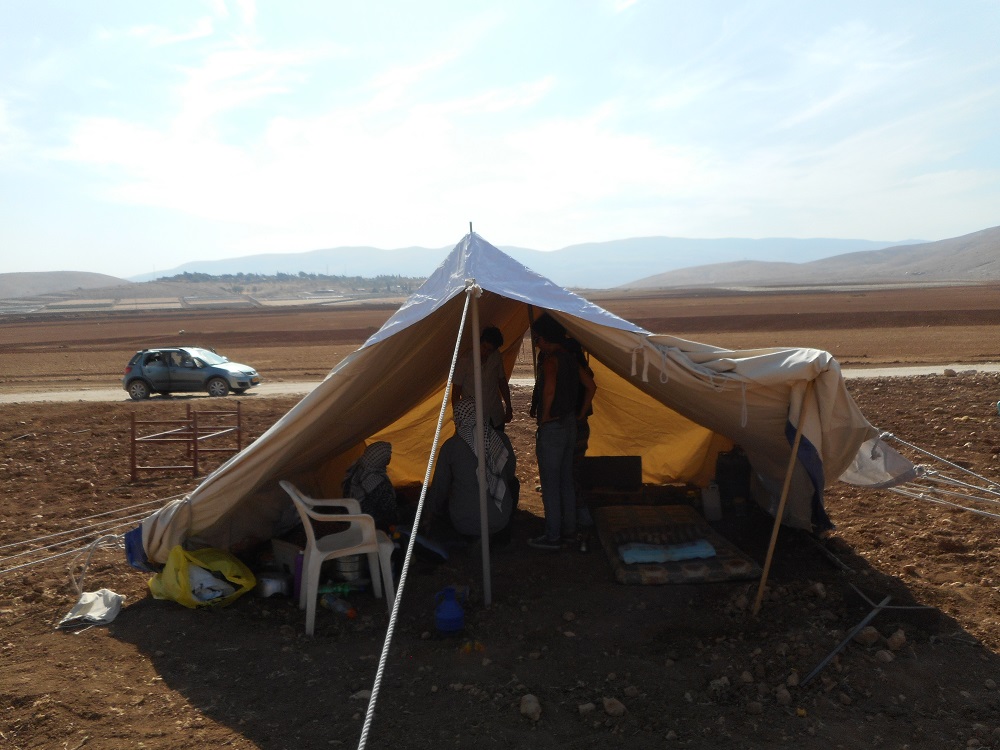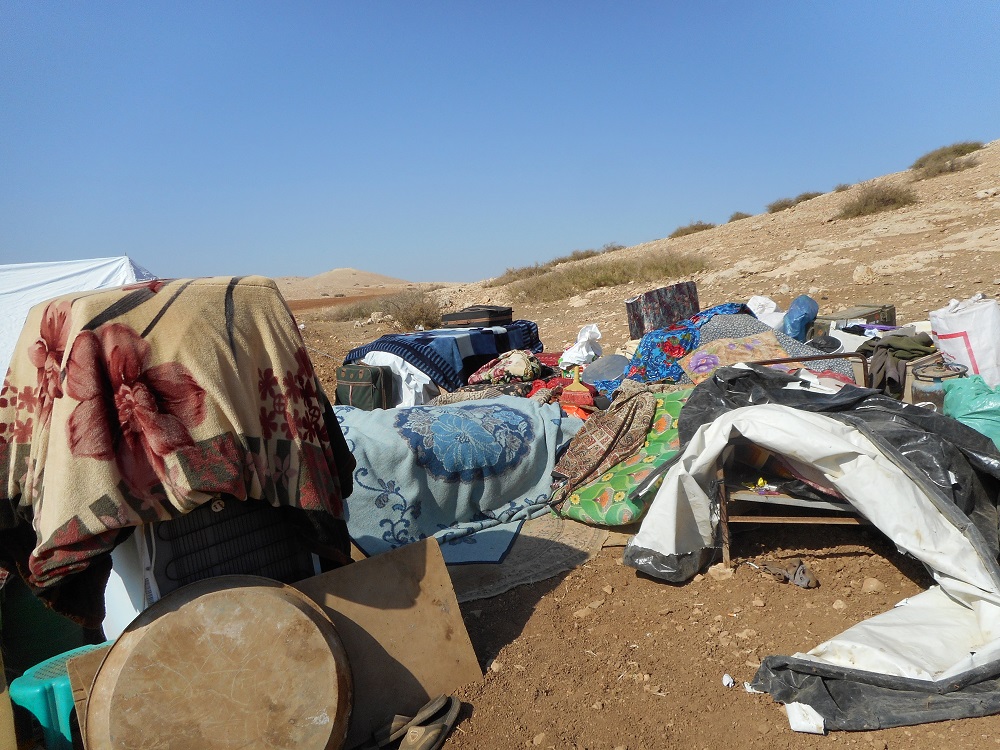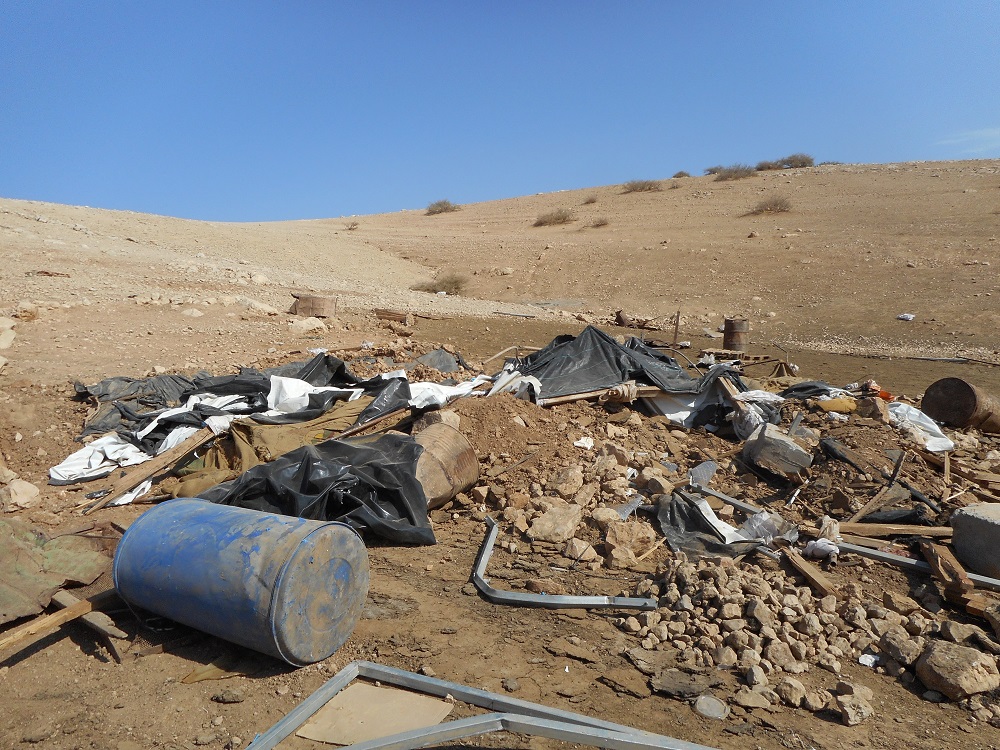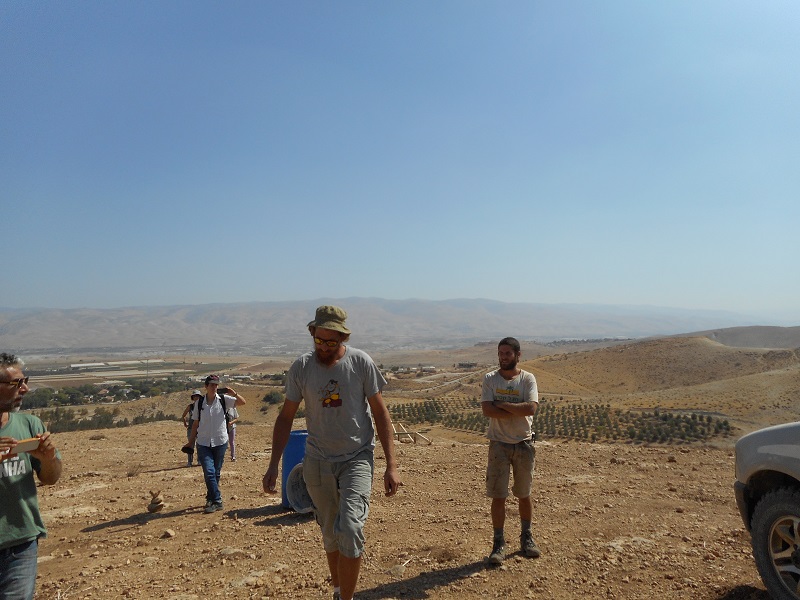Jordan Valley: Israeli army demolishes dwellings in Ras Al Ahmar, settlers put up another outpost

The eye might grow a bit accustomed to the piles of rubble that were once a home. We have seen so many of them lately that another such pile is less surprising. But then we see the people – so lost, so miserable, their whole world shattered along with their home, crowded in a tiny pup-tent donated by the Red Cross, their belongings all strewn outside, and they have no idea where to start…

We, who have a safe home to return to, do not know where to direct our gaze for utter shame: ashamed of being Israelis, even if we do struggle against this racist policy of dispossession. Just one week ago we somehow came forth to stand in solidarity with the people of Al Hama, two weeks ago at Aqaba, and a month ago at Fassail, and here we stand again, helplessly facing the extensive demolition rubble (kilometers of it) at Ras Al Ahmar hamlet last Sunday, October 9, 2016. I’m afraid to approach the people. I have no help for them. I no longer know what to say to them.

Once more the bulldozers arrived at dawn, mercilessly destroying the meager possession, the scant security and stability these people still had, living already insecure under military occupation. And what was demolished? Everything. Miserable tents, sheep pens, outhouses, an outdoors baking oven (“we don’t even had bread now”), solar plates and transformers that supplied two hours of power a day. They were allowed a few moments to get out their mattresses, blankets and clothes. But not their electrical appliances! The bulldozers simply crushed the tents and everything that remained inside them – television, stove, and mostly importantly – the cell phone. And to make sure everything was destroyed, they upturned dirt over the remains, and that was that. The sheep remained in the seething sun with no shelter. How are they at fault? It is now the sheep birthing season, eagerly awaited all year, and now all of Mohammad’s lambs are dead. Where are all the save-the-animals organizations? Are lives of Palestinian animals less worthy?

An elderly couple - the woman is unable to walk because of a severe knee problem (it is extremely swollen) - and their children, 7 persons in all. They live near the infamous Gokhia Gate, which is supposed to enable Palestinians passage from the eastern part of the Valley by vehicle to the villages and towns to the west. And it has been closed and locked by order of the army. We reached other ruins, but did not meet the people. Other sites were inaccessible because of mud. In total, the homes and sheep pens of 9 families were demolished and left 54 people and much livestock without shelter of any kind.
For Israel and Israelis Ras Al Ahmar is a god-forsaken hole - far from the settlements, from the main road, and very close to Area A (under control of the Palestinian Authority). What is it that makes Israel so very eager to destroy people’s lives this way? After all not a single Jew is about to settle there or even pass by, except the army that carries out many maneuvers in the area. Perhaps the proximity to Area A is what spurs Israel to show its brutal might and frighten Palestinians so they would not drift into Area C (under full Israel occupation control).
The Jordan Valley is rich with water and extremely fertile. We passed along bright green fields of carrots, peas, cauliflower and cabbage that are generously irrigated, even wastefully to the point that roads and tracks are flooded. The fields belong to the inhabitants of the Palestinian town of Toubas, and West Bank workers cultivate them.
The native inhabitants of the Palestinian Jordan Valley are shepherds, and do not cultivate such fields. Water pumping is carried out in Area B and the water is transported via pipes.

above Al Hama
Earlier, at 10:00, we came to Al Hama following information that settlers are erecting yet another outpost, right above the site on the south-western slope, not far from the new outpost that is close to Al Hama (see our report of September 28). We ascended the hill by foot and found a wooden structure in initial phases of construction, and 2 water tankers. Guy of Ta’ayush called the police and complained of illegal trespassing into state lands. While we waited for the police, 3 settlers arrived in their cars. They did not approach us at all, but rather went straight to the Palesitnians and photographed them, threateningly: “Just you wait until these Lefties leave – we know who you are”. Apparently the demolition at Al Hama was not “just another demolition”. Apparently the settlers, aided by the army, are determined to put up another illegal outpost there. They surround the hamlet with small outposts while demolishing the Palestinian hamlet although it is situated on privately-owned Palestinian land, and in spite of an interim order suspending demolition…

